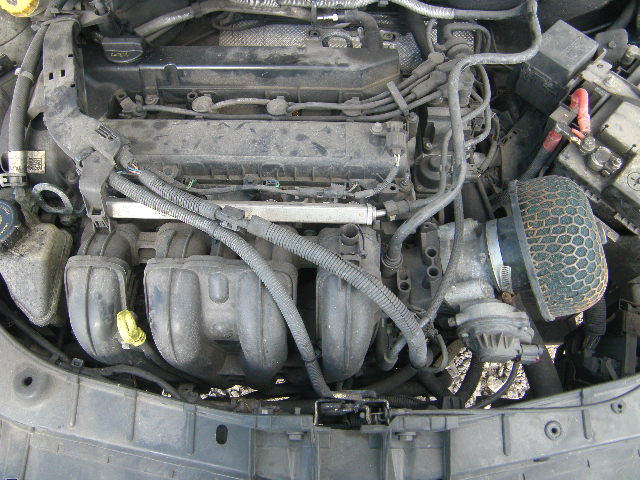Exploring the Development of Engines: From Traditional Layouts to Modern Marvels
From the initial steam engines that powered the Industrial Change to the introduction of internal burning engines that transformed movement, each phase has contributed to greater performance and capability. As we check out these landmarks, one have to think about exactly how the future of engine layout may unravel, testing our understandings of power and effectiveness.
The Birth of Engine Technology
The introduction of engine technology noted a pivotal minute in human technology, transforming energy conversion and transport. The earliest engines emerged from the need to harness mechanical power for sensible use, leading to the development of devices that transformed numerous power kinds into activity (ford fiesta engine).
The development of the internal burning engine and the creation of the steam engine catalyzed a profound change in commercial abilities. These engines not just boosted performance however additionally expanded the extent of human flexibility, allowing unmatched transport possibilities. The early models prepared for the mechanical globe, assisting in the surge of markets and reshaping social structures.
As engine styles evolved, they progressed and integrated innovative materials design principles, leading the way for modern growths - ford fiesta engine. The birth of engine innovation fired up a ruthless pursuit of performance and power, setting the phase for the vibrant development of transport and industrial equipment that would adhere to
Steam Engines and Their Influence

The vapor engine's influence was particularly noticeable in the transport industry (ford fiesta engine). Steam-powered engines assisted in the quick activity of items and people throughout substantial ranges, efficiently reducing the geographical barriers that had formerly hindered profession and communication. Similarly, steamships changed marine traveling, permitting quicker and much more reputable crossings of rivers and oceans.
In sector, steam engines powered factories, enabling automation and the surge of urban facilities as hubs of financial task. This shift not just changed labor characteristics but likewise added to the introduction of a consumer-driven society. Steam modern technology cultivated technologies in design and production procedures, laying the groundwork for future advancements in engine design. The tradition of heavy steam engines is extensive, showing a turning point in human resourcefulness and the relentless quest of progression.
The Increase of Interior Combustion
Frequently outweighing steam power, the rise of internal burning engines noted a transformative shift in transport and sector during the late 19th and very early 20th centuries. The development of these engines, defined by their capability to burn fuel within the engine itself, allowed higher effectiveness and power compared to standard heavy steam engines. Pioneering inventors such as Nikolaus Otto and Rudolf Diesel played vital functions in refining engine designs, bring about prevalent fostering in vehicles, watercrafts, and industrial equipment.
The internal burning engine's compact dimension and relatively light-weight nature assisted in the emergence of individual cars, changing individual mobility and reshaping urban landscapes. By enabling faster travel and the reliable transportation of products, these engines catalyzed economic development and promoted globalization. The adaptability of gas options, consisting of gasoline and diesel, additionally enhanced their appeal, permitting for varied applications throughout different sectors.
Regardless of the environmental issues that would later emerge, the initial attraction of interior burning innovation stocked its transformative capacity. As society welcomed this development, the structure was laid for modern transportation systems, developing internal burning engines as a cornerstone of industrial development and life throughout the 20th century.
Innovations in Engine Performance
As interior burning engines became indispensable to transportation and market, the focus moved in the direction of enhancing their performance to meet growing demands for performance and sustainability. Technologies in engine layout, product science, and technology have substantially added to this development.
One major development is the growth of turbocharging, which permits for increased air intake, resulting in even more full fuel combustion and enhanced power result without enlarging engine size. Additionally, variable shutoff timing systems have been carried out to enhance engine performance across numerous RPM arrays, consequently boosting gas performance.
The utilization of innovative gas shot innovations, such as straight injection, has actually likewise played an essential navigate to these guys duty. This method enables even more precise control over the fuel-air combination, promoting better burning and minimizing exhausts. Lightweight materials, consisting of light weight aluminum and composite elements, have actually been taken on to minimize total engine weight, leading to boosted effectiveness.
These developments reflect a broader pattern within the automotive sector, where the synergy in between design development and environmental factors to consider drives the ongoing pursuit for greater efficiency in interior combustion engines. Therefore, contemporary engines are currently much more powerful, cleaner, and effective than in the past, leading the way for an extra lasting future in transport.
The Change to Electric Power
With expanding issues over ecological impact and fossil gas dependence, the vehicle sector is experiencing a considerable change in the direction of electrical power. This change is driven by a combination of technological innovations, regulative stress, and transforming consumer choices. Electric cars (EVs) provide a compelling option to typical interior combustion engines, flaunting browse around this web-site lowered greenhouse gas exhausts and reduced operating costs.
The surge of battery modern technology has been a video game changer, with lithium-ion batteries ending up being much more effective and cost-efficient. Improved power thickness and faster charging capabilities have actually made EVs more practical for everyday use. Additionally, governments worldwide are implementing motivations and setting ambitious targets for eliminating fossil fuel cars, consequently speeding up the adoption of electric power.
As billing framework expands and battery technology proceeds to improve, the change to electric power is poised to improve the automotive landscape, advertising sustainability and innovation in the years to come. The future of transport is electric, and the energy is indisputable.
Final Thought
The evolution of engine modern technology represents a significant trajectory of technology that has exceptionally affected transportation and market. From the fundamental vapor engines to the transformative interior combustion engines, each advancement has actually contributed to improved flexibility and economic growth.
